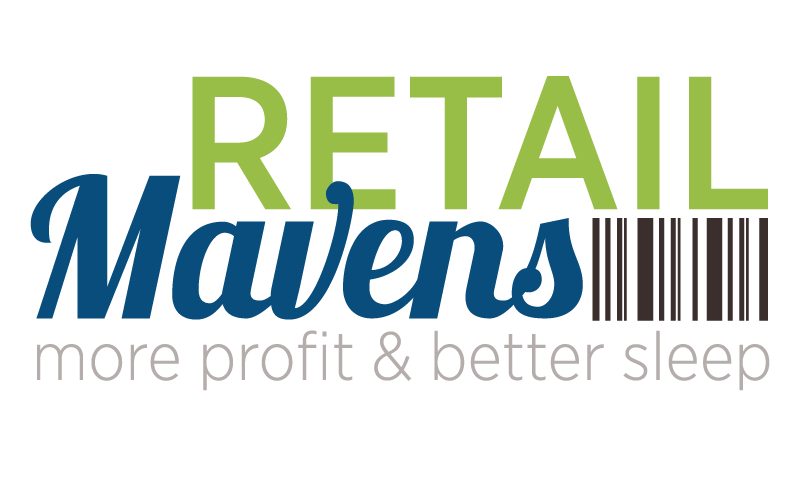Operating expenses can be the bane of any retail store owner’s existence. They creep up on you, and before you know it, they’re eating away at your profits. If you’ve found yourself asking, “How do I get my operating expenses under control?” you’re not alone. Let’s break down some strategies for tackling the biggest expense categories so you can regain control and boost your bottom line.
Reducing Operating Expenses #1 – Inventory Management: The Biggest Expense
Your inventory has the potential to make your store more profitable. As it’s often the largest expense for a retail store, even small shifts in your inventory strategy can have a big impact. To reduce this expense, my #1 tip is to…
Raise Your Initial Markup (IMU): One of the most effective strategies to reduce your Cost of Goods Sold (COGS) is to increase your Initial Markup (IMU). Ideally, the average IMU for all your inventory should be between 55-60%. Here’s how you can calculate it:
- Subtract the cost of your current inventory from its retail value.
- Divide this figure by the retail value.
- Multiply by 100 to get the percentage.
If your average IMU is less than 55%, start creating cash immediately by raising your prices. Adjusting your IMU can have a significant impact on your gross profit margin, helping you to cover your operating expenses more effectively.
Reducing Operating Expenses #2 – Payroll: Balancing Your Team’s Costs
Payroll is another significant expense that often gets out of hand. It’s crucial to not just set your team’s schedule and leave it the same month after month. You must balance this cost with your sales.
Align Payroll with Sales: Your team’s payroll should not exceed 10% of your sales. This means you need to be proactive in adjusting your staffing levels based on your sales projections. Here’s a quick guide:
- When sales are expected to go down: Reduce staffing hours accordingly. This might mean fewer shifts or shorter hours for some team members.
- When sales are expected to go up: Increase staffing hours to ensure you can meet customer demand and provide excellent service.
Monitoring and adjusting payroll can help ensure you’re not overspending during slow periods and are adequately staffed during busy times.
Reducing Operating Expenses #3 – Rent: Negotiating for Better Terms
Rent can be a hefty fixed expense that eats into your profits. Your rent should not be more than 10% of your sales (and no more than 12% when combined with your advertising costs). If your rent is too high, it’s time to negotiate…
Negotiate with Your Landlord: Approach your landlord with a request for a rent reduction. Here’s how to make your case:
- Speak to the decision maker: Ask to speak with the person in charge of making decisions and not just your property manager.
- Show your numbers: Be transparent about your financial situation. Demonstrate how high rent is impacting your profitability.
- Be persistent: Negotiations can take time. Don’t be discouraged if the landlord doesn’t agree right away.
- Research market rates: Compare your rent to other similar spaces in your area. Even if your rent is in line with the market, emphasize that it’s not sustainable for your business.
Negotiating a lower rent can free up cash flow, allowing you to allocate more resources to other critical areas of your business.
For most store owners, getting these three operating expenses in line is often enough to get them to their profit point. If it doesn’t quite get you there, here are a few other areas to look at.
Other Expense Reduction Strategies
While inventory, payroll, and rent are the major expenses, there are other areas you can scrutinize to reduce operating expenses.
Utilities and Supplies:
- Energy efficiency: Invest in energy-efficient lighting and appliances to reduce utility bills.
- Bulk purchasing: Buy supplies in bulk where possible to take advantage of discounts.
Marketing and Advertising:
- Digital marketing: Shift more of your marketing efforts online, where you can often get more bang for your buck.
- Track ROI: Monitor the return on investment for all your marketing campaigns to ensure you’re spending wisely.
Administrative Costs:
- Software solutions: Use software to automate administrative tasks and reduce labor costs.
- Outsourcing: Consider outsourcing non-core activities to specialized firms that can do them more efficiently and cost-effectively.
Next Steps
Getting your operating expenses under control is crucial for the financial health of your retail store. Start by focusing on the biggest expense categories: inventory, payroll, and rent. Implement strategies to manage these costs effectively, and you’ll be well on your way to boosting your profitability.
Check out how to align your budget with profit here!
Remember, every store is unique, so tailor these strategies to fit your specific situation. If you’ve tried these steps and still find yourself struggling, don’t hesitate to reach out. Sometimes, a fresh perspective can uncover hidden opportunities for cost savings.


